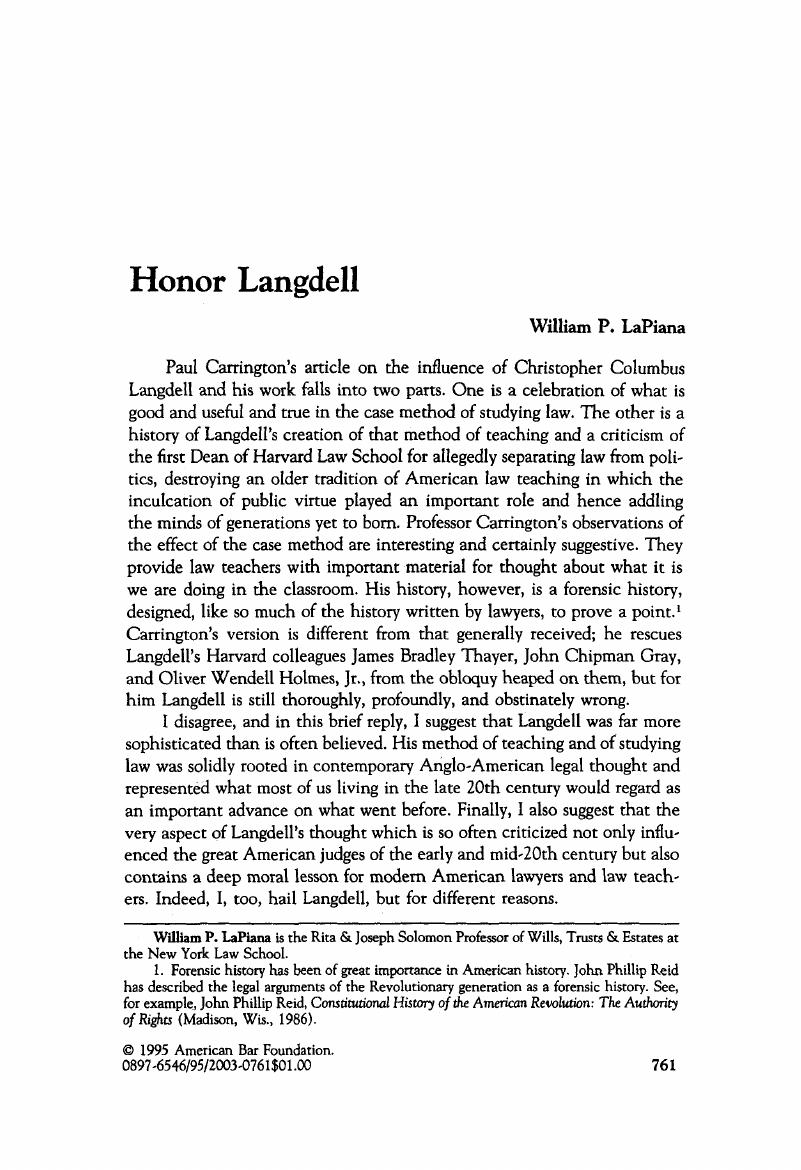No CrossRef data available.

1 Forensic history has been of great importance in American history. John Phillip Reid has described the legal arguments of the Revolutionary generation as a forensic history. See, for example, John Phillip Reid, Constitutional History of the American Revolution: The Authority 0/Rights (Madison, Wis., 1986).Google Scholar
2 For an excellent explanation of the relationship between common law jurisprudence and the writ system, see Michael Lobban, The Common Law and English Jurisprudence, 1760-1850 (Oxford, 1991), esp. ch. 9.Google Scholar
3 William P. LaPiana, Logic and Experience, The Origin of Modern American Legal Education 103 (New York, 1994). In the preface to his casebook on constitutional law, Thayer elaborated on the relationship between and science, identifying the case method as one example of “what scientific men call the genetic method of study which allows one to see the topic grow and develop under his eye, a thing always grateful and stimulating to the human faculties, as if they were called home to some native and congenial field.” 1 J. B. Thayer, Cases on Constitutional Law v-vi (2 vols. Cambridge, Mass., 1895).Google Scholar
4 LaPiana, Logic and Experience 127-28.Google Scholar
5 Langdell, C. C., “The Northern Securities Case and the Sherman Anti-Trust Act,” 16 Harv. L. Rev. 539 (1903).CrossRefGoogle Scholar
6 William P. LaPiana, “Thoughts and Lives,” 37 New York L. School L. Rev. 607 (1994).Google Scholar